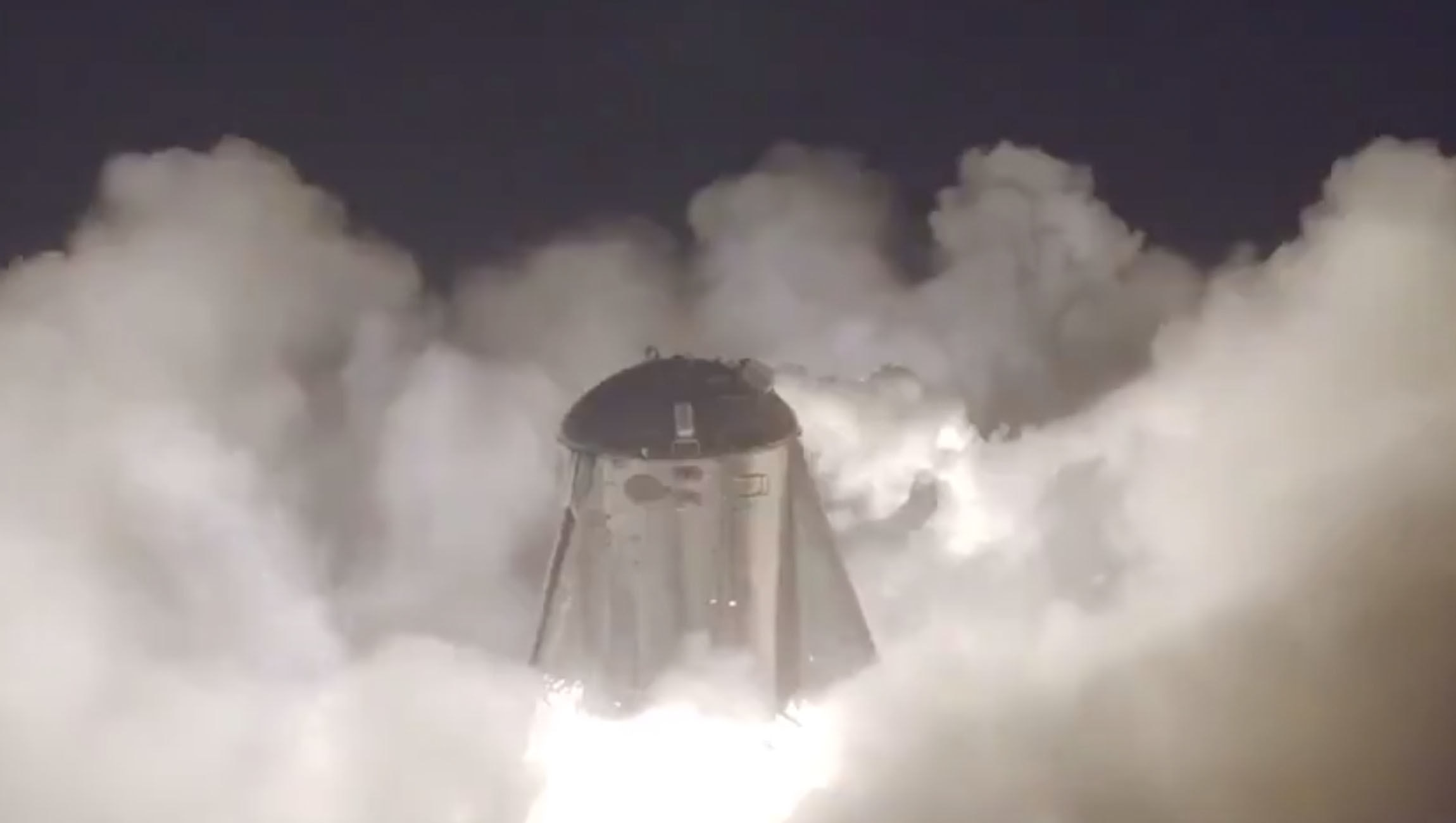Create a free profile to get unlimited access to exclusive videos, sweepstakes, and more!
Look ma, no tether: SpaceX’s Starhopper took off all by itself

Something big went down late last night. It’s one of those things you wouldn't even know happened until it actually did. And this time, the spacecraft managed to do so without starting a fire.
SpaceX was able to successfully launch its Starhopper — really a prototype for its future Starship rocket — without a tether, and keep it hovering in the air for a few minutes, before it finally had to touch back down on Earth again. So what if it didn’t get too high this time, it still proved that not only was the Starhopper able to fly, but SpaceX’s next-generation Raptor engine actually works.
Starhopper tried to take off on Wednesday in Boca Chica, Texas, but even though it had to be aborted before igniting the engine, a fuel leak from the hardware caused it briefly to go up in flames and set off a brush fire near the launch pad. It was supposed to ascend to 65 feet, though Elon Musk has been secretive about how high it actually went.
This is the second time SpaceX tried to fly Starhopper untethered, and the first time it actually succeeded. Whenever it ignited a Raptor engine under the rocket proto before, Starhopper stayed tethered to the ground and only jumped up a few inches.
It’s going to be like a sci-fi movie when this thing finally morphs into Starship. That rocket will launch people to the moon and Mars and who knows where in deep space, but that isn’t even the most impressive thing about it: It will also be fully reusable, able to land upright on whatever its destination might be, and to take right back off again! Falcon 9 is capable of that, of course, but Starship will be a major upgrade.
The next hop test will be in about a week or two, as Musk tweeted, and is supposed to shoot up to 650 feet in the air, hopefully without a flaming takeoff.
(via The Verge)


























